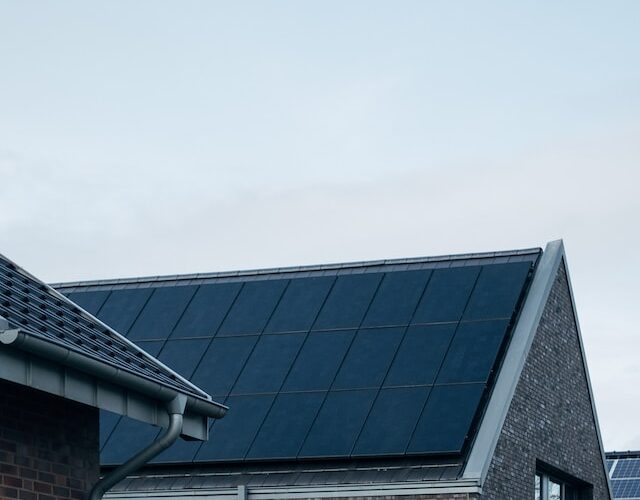Solar panels are a cheap, renewable choice for lowering your energy bills, improving the environment, or increasing the value of your property. However, before making the transfer, there are a few things to consider.
The upfront cost of solar panels is the biggest concern for many people. However, the cost of production is dropping dramatically over time.
Upfront Cost
There are many financial benefits to installing a solar panel system. These include energy savings and increased home value. In addition, a solar system can help reduce carbon and greenhouse gas emissions. So how much do solar panels save per month? That equates to an average of 877 kWh per month. Let’s multiply the national average rate of $0.13 per kWh by 10,694 kWh. By installing a properly sized solar panel system, the average household in the United States might save up to $1,390.22 per year on energy expenditures. This works out to a monthly savings of more than $115.
However, you must determine your upfront expenditures before installing a solar power system. These are normally based on the number of panels and size but may also include equipment fees and operations costs.
For example, the amount of panels you need will depend on how much electricity you want to absorb from the sun and your energy use habits. Additionally, solar panels are available in different wattages.
The larger the panels you purchase, the more energy you can produce and the more money you can save on your electricity bill. Sometimes, you can even sell any extra electricity you generate back to the utility company – this is known as net metering.
While the upfront cost of solar panel savings varies based on location and energy usage trends, it’s still significantly less expensive than traditional energy sources like coal and natural gas. This is especially true in warmer and sunnier regions.
Maintenance Costs
The cost of solar panels has dropped dramatically over the years, making it easier and cheaper to convert your home to a renewable energy source. However, you can still expect to pay some maintenance costs to keep your solar panel system in good working order.
The yearly cost of maintaining your solar panels depends on the number of installed panels, local weather conditions, and other factors. Generally, your system should only need cleaning two to four times a year. Check your solar panels for debris and dust that might jam them up in the fall and spring.
If you notice any issues with your panels, you should have them inspected by a professional. You can save thousands of dollars in repair expenditures by spotting minor problems before they become more serious.
These inspections often alert you to problems like cracked glass that could reduce your panel’s efficiency. These issues are the most common but can also include loose wires or a damaged inverter.
If you notice any issues with your panels, you can contact the manufacturer or a solar company to make repairs. These companies will usually provide a warranty on the repairs.
Energy Rates
Solar panels are a great way to reduce energy bills, save money and help the environment. They can also help you sell excess power to your local utility company. Many states have a net metering program that allows you to bank the extra electricity your solar system produces and sell it back to your utility when needed.
The cost of electricity varies greatly by location, season, and time of day. Check your utility’s website to find out what average rates you can expect to pay in your area.
Electricity costs are a major driver of the cost of a solar panel installation. They also affect your ability to save money over the long term.
A solar array can offset high peak-hour prices by producing more power during these times, and it’s a great idea to turn off unnecessary appliances when you’re not home to avoid spending a lot on electricity.
Lastly, it’s important to consider how much your electricity costs are every month. This will help you determine whether or not you’ll be able to pay off your solar panel system.
It’s best to use a solar calculator to estimate the savings you could achieve by installing a solar panel system. To estimate your potential savings, you must know your total electricity usage for the year and your electricity company’s pricing and net metering program.
Environment
Solar power has an extremely positive impact on the environment, reducing greenhouse gas emissions, limiting fossil fuel use, and helping fight climate change. It is also a renewable resource, meaning it can be used repeatedly to create energy.
One of the biggest impacts solar has on the environment is that it reduces the use of finite natural resources, such as water and land, used to produce other forms of energy like coal and nuclear. A study by LUT University in Finland found that solar panel technology consumes 2%-15% of the water that coal and nuclear power sources used to produce electricity.
Another important impact is that solar panels don’t produce the same level of emissions as traditional power sources, so less pollution is produced. It has been estimated that a single home with solar installed reduces greenhouse gas emissions by the same amount as planting about 150 trees every year for its lifetime.
Ultimately, the best thing about solar is that it does not directly release pollutants into the air or water supply that cause climate change. It is a clean, sustainable energy source that will help our planet stay healthy and vibrant for future generations.
However, a few factors still have to be considered when deciding whether or not to go with solar panels for your home. Among these are the manufacturing process, chemical use, and recycling of the panels.

